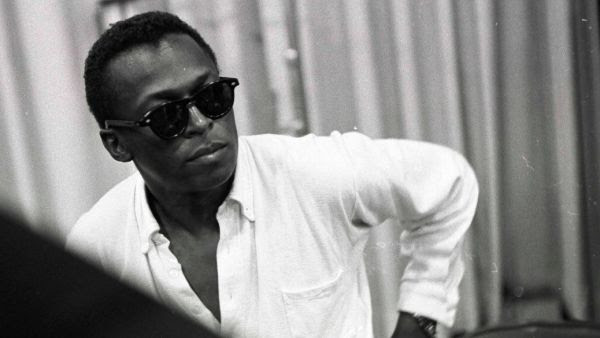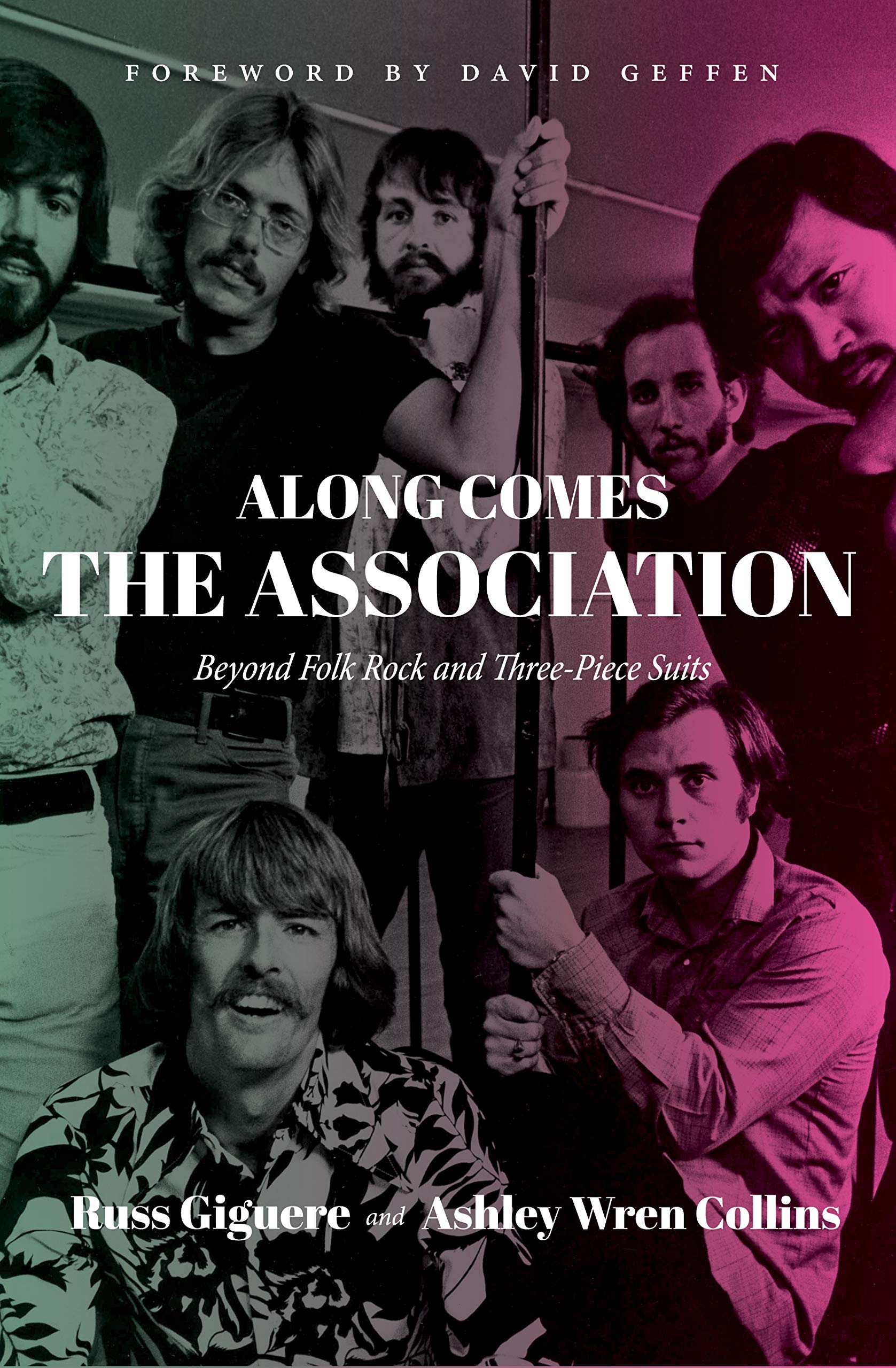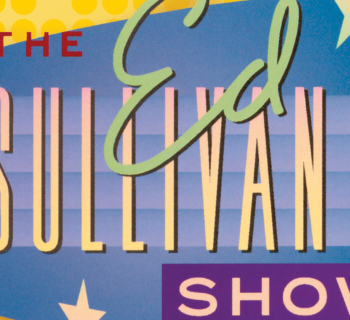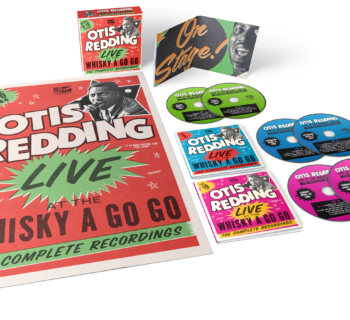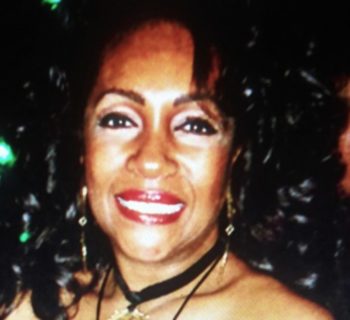Seventy years ago, in a nondescript basement room behind a Chinese laundry in midtown Manhattan, a group of like-minded jazz modernists formed a groundbreaking collective. Among them were jazz headliners soon-to-be: Gerry Mulligan, Lee Konitz, Max Roach, John Lewis, the arranger Gil Evans and significantly, the 22-year-old trumpeter Miles Davis, who became the leader of the project. The music this historic nine-piece group created together in 1949 and 1950 -- in the studio and onstage -- came and went with little notice at first. Seven years later, when the music was collected on a full LP for the first time, the world came to understand its impact: a true watershed moment in postwar music, dubbed with the name that remains one of the best known in modern jazz: Birth of the Cool.
This past June, Blue Note/Ume’s The Complete Birth of the Cool chronicled the brief yet monumental importance of the Miles Davis Nonet. Honoring the 70th anniversary of the initial Birth of the Cool sessions, The Complete Birth of the Cool presents together all the music created by this collective.
Available in 2 LP vinyl, CD, and digital formats, the collection includes the twelve sides they recorded in 1949/‘50, as well as the ensemble’s only extant live recordings, recorded at the Royal Roost. The new release marks the first time since 1957 that the recordings have been remastered for vinyl and the first time all the Birth of the Cool performances -- studio and live – are available together on LP.
Media materials supplied by the Blue Note/UMe label describe the retail items.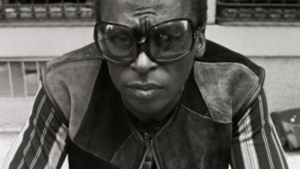
“The Complete Birth of the Cool stands as an important reminder of the enduring stature of trumpeter Miles Davis, whose career famously shifted from one phase to the next, serving a Pied Piper role each time his intrepid musical spirit brought on a change. In 1949, Davis was a determined 22-year-old -- Birth of the Cool saw him helm a creative project for the first time, his name in the titular spot, assuming bandleader duties: calling rehearsals, booking gigs. In one sense, the music turned him away from the small-band, unfettered energy of bebop -- the style founded by Charlie “Bird” Parker and Dizzy Gillespie which first drew him to New York City. In another, Birth of the Cool was Davis’ (and the group’s) determined attempt to mutate the language of bebop, mixing with a wider palette of sounds and sophistication.
The seeds of Birth of the Cool were planted in the Manhattan basement apartment of the arranger/composer Gil Evans, who hosted informal musical meetings in which ideas about arranging, jazz, and classical music were shared and explored among a younger generation of musicians. The meeting of Evans and Davis in this humble location led not only to the triumph of Birth of the Cool, but predicted future collaborations, as well, for albums that are regarded as cornerstones of modern jazz -- Miles Ahead, Porgy and Bess, and Sketches of Spain.
The 2LP vinyl and CD packages include a booklet filled with archival photographs and an extensive new essay by GRAMMY®-winning American music historian Ashley Kahn.”
The cross-racial and intergenerational friendship of Miles Davis and Gil Evans is one of the stories told in Kahn’s The Complete Birth of the Cool liner notes essay, as well as the big band leader/pianist Claude Thornhill and his role as a source-point to Birth of the Cool.
Also explored is the perceptive support of Capitol Records producer Pete Rugolo, who recorded the group initially, and who in 1957 oversaw the album’s reissue and was credited for coming up with the title Birth of the Cool. The importance of Davis’ fellow soloist, alto saxophonist
Lee Konitz is also covered in the essay, with new comments from the jazz legend. 92-year old Konitz died earlier during April in New York.
The Complete Birth of the Cool is an invitation to understand the music within the context it was born. To the ears of music fans in 1949, the sound of Birth of the Cool was as entrancing as it was strange: intricate in its big band arrangements, but with solos and rhythm section breathing the fire of bebop. There’s the flavor of modern classical music on some ensemble passages, and at times musical devices -- like counterpoint -- one would not expect to hear in popular music of the day.
Birth of the Cool was music that focused on arrangements -- the Miles Davis Nonet began as an arranger’s band. Even though different composers and arrangers created the music (Gil Evans, Gerry Mulligan, John Lewis, John Carisi), Birth of the Cool has a remarkably consistent sound. It’s about a collective, not an individual.
In fact, as jazz historian Dan Morgenstern writes, “There can be little doubt that these records triggered the advent of a successor style to bebop.”
Yet, as one record producer asserted, Birth of the Cool was the sound of arguably the most important voice in modern jazz reaching its first stage of maturity. “Here was a chance for all his sensitivity, compared to Bird’s savageness and deep fire and emotion,” said Bob Weinstock, founder of Prestige Records. “Here was an outlet for Miles Davis to let out the sensitivity that he had as a musician.”
The Birth of the Cool story is about beginnings and debuts. Miles was coming out of playing with Bird, frenetic bebop and conjures with Evans, Mulligan, Carisi and others this almost radical sound tapestry where the soloist takes a backseat to the “virtuosity” of the arrangements.
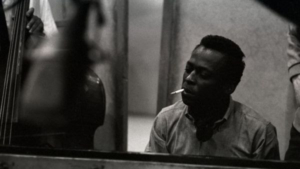 Davis’ approach is almost always referred to as "cool" yet he defined his sound as light and floating, as opposed to the "West Coast" cool sound of hard bop played by a lot of former big band soloists. Instrumental participants and collaborators on Birth of the Cool sessions would subsequently birth their own jazz ideas into a post- bop world in the decades that followed.
Davis’ approach is almost always referred to as "cool" yet he defined his sound as light and floating, as opposed to the "West Coast" cool sound of hard bop played by a lot of former big band soloists. Instrumental participants and collaborators on Birth of the Cool sessions would subsequently birth their own jazz ideas into a post- bop world in the decades that followed.
Asked about the Birth of the Cool title, Miles Davis once said: “I think what they really meant was a soft sound. Not penetrating too much. To play soft you have to relax…” He later added in his autobiography, “Birth [of the Cool] was not only hummable but it had white people playing the music and serving in prominent roles…we shook people’s ears a little softer than Bird or Diz did, took the music more mainstream.”
Also due this fall in North American movie screens is a new documentary Miles Davis: Birth of the Cool featuring never-before-seen archival footage, studio outtakes, and rare photos.
Directed by acclaimed filmmaker and Emmy-Award winner Stanley Nelson, produced by Nelson and Nicole London, it’s a venture between A Firelight Media/Eagle Rock Films Production for American Masters Pictures and Eagle Rock Entertainment in association with BBC Music ©2019 Eagle Rock Entertainment Limited and THIRTEEN Productions LLC. Actor Carl Lumbly serves as the voice of Miles Davis.
“During this difficult and uncertain time, I like so many others have found solace in music and film. My heart has felt so full in recent days since many folks have reached out after finding their own comfort from streaming my film Miles Davis: Birth of the Cool. We can learn so much from Miles, but what we should all be thinking about in this current moment is his immense ability to constantly expand his mind and creative capacity during tough times in his own life. No album better exemplifies that than his career-resetting, psychedelic opus Bitches Brew -- and on its 50th anniversary I know what I’ll be jamming out at home to.”
- Stanley Nelson, Director and Producer of Miles Davis: Birth of the Cool
Miles Davis: Birth of the Cool tells the story of a truly singular talent and unpacks the man behind the horn. The life and career of musical giant and cultural icon Miles Davis, a true visionary, innovator and originator who defied categorization and embodied the word: cool.
During April 2020 the film was released on DVD and Blu-Ray by Eagle Rock.
In June 2019, I discussed the album Birth of the Cool and Miles Davis: Birth of the Cool with Vince Wilburn, Jr., nephew of Miles Davis, and Erin Davis, the son of Miles Davis.
After Miles Davis died on September 28, 1991, Wilburn, along with Erin Davis and his sister Cheryl jointly began to oversee on behalf of the Miles Davis estate musical endeavors and all aspects of his catalog and brand.
“I think Birth of the Cool is an overlooked period, an overlooked piece of music that should be re-visited. I think by Universal reissuing this record it’s like waxing a beautiful car that you’ve owned for years,” suggests Wilburn.
“Uncle Miles never discussed the album with me and never wanted to think about or talk about the music he recorded in the past. It was about what we were doing now, at the time and in the future,” underlined Vince.
“I had a quintet cassette that I used to listen to when we had Walkmans and he used to hear me play it in the car together going to airports and on tour. One day he said, ‘give me that cassette,’ like he wanted to hear it. So I gave it to him or loaned it to him, whatever, and never got it back. (laughs). Either he was gonna listen to it or he didn’t want me listening to it, because we were trying to move the band forward and he never mentioned Birth of the Cool.”
The BOTC album was the first project Miles Davis worked with arranger Gil Evans on. I asked Vince about the Davis and Evans relationship.
“When uncle Miles flew up to New York to record Man with the Horn, that was 1979 and Gil used to come by 30th street and just chill in the corner. Uncle Miles would go over and whisper to him about certain things he heard.
“To witness that friendship and that brotherhood. I wasn’t privy to the conversations, you know. They would talk about the music. The structure of the music. Gil was very gentle and soft-spoken. Very organic and cool.
“There was a tour in 1983 of Miles and Gil in Japan. And Al Foster was playing drums but I had the privilege of travelling with uncle Miles during that time, and that was cool to see them hang out in Japan.”
I also asked musician and producer Wilburn about preparing projects from the influential Miles Davis tape catalog.
“Visiting the tape vaults is like the sacred scrolls,” he admits. “It’s exciting. I never get tired of it. It’s like lost treasures. Look, I’m a sensitive cat and I live in the future and I live in the past and I live in today. So I have the best of all worlds,” he underscores. “And when I go into those vaults and when I talk to musicians or when I play with musicians. I just played with Ron Carter. I mean, this is like my DNA. It’s part of who I am.
“It’s part of me, you know. And so when I visit those vaults and when I look at those tapes and when I just read ‘em or touch them, or the casings, it’s like a blessing. And, Harvey dig this, I still get excited about it. I still get that rush. And I still get that ‘Man, I can’t wait for the public to hear this or that.’
“Erin to me is like the little brother I never had. You know what I mean? When I lived with him and Uncle Miles out in Malibu, Erin had his drum set up in his room playing to all this hard rock, Metallica, jamming out. Right? And I would ask ‘Hey Erin. Who is that you just played?’ And Uncle Miles would ask him the same thing. And that was like 1986, 1987.”
“You know it’s really this great honor just to be able to do it and have the conversation about the 70th anniversary of Birth of the Cool, offers musician and producer Erin Davis.
“It falls to Vince and I and Cheryl and others that we work with. Universal has great people who we worked with on this project, a lot of younger people. Some we knew or were introduced to, and guys who have been around for a while.
“Sony has a big portion of the catalog and it’s great to also work with Universal on stuff. It’s nice when we can work with Concord on their stuff as they have the Prestige catalog. It’s great to see them put things out.
“I like releasing things out that people haven’t heard. Sure you have the basis for the record, but I like to hear things that they’ve recorded but never used. Not only outtakes all the time. I mean like live stuff, some things that give insight into what was going on at that time.”
I also discussed the Miles Davis: Birth of the Cool documentary with Vince and Erin.
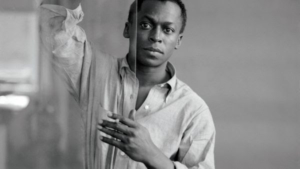 “We’ve been meeting with [director and producer] Stanley Nelson trying to work this out for years and it came back around,” explained Wilburn. “And we [Erin and Cheryl Davis] felt Stanley was a great fit. I think it captures the vulnerability, the sensitivity, and not sugar coated. Miles was not a choir boy. This is from real family members, past relationships with Frances Taylor Davis, Corky McCoy, who was like a brother to Uncle Miles, Erin’s mom, various musicians, and Mark Rothbaum, his former manager, who now manages Willie Nelson. Very proud of it.”
“We’ve been meeting with [director and producer] Stanley Nelson trying to work this out for years and it came back around,” explained Wilburn. “And we [Erin and Cheryl Davis] felt Stanley was a great fit. I think it captures the vulnerability, the sensitivity, and not sugar coated. Miles was not a choir boy. This is from real family members, past relationships with Frances Taylor Davis, Corky McCoy, who was like a brother to Uncle Miles, Erin’s mom, various musicians, and Mark Rothbaum, his former manager, who now manages Willie Nelson. Very proud of it.”
“It really gives you quite a perspective of the width and breadth of his musical career,” Erin emphasizes. “So like his trajectory over different types of music, different eras, present events and technology. And I like watching him progress through that with all his different bandmates. In a kind of somewhat linear way. Just to see how he was evolving, changing and how he has to bring in new people. He had a thing of he really loved people like ‘Trane, but at some point they had to move on. And at some point, Herbie [Hancock] moved on, and Tony Williams and Ron Carter.
“It’s really special to see somebody moving through all those different time periods and moving into electric instruments and moving on beyond that. It was kind of cool just to see it all kind of like rolled out in that fashion.”
Vince Wilburn, Jr., nephew of late jazz icon Miles Davis, oversees Miles Davis Properties, LLC, along with Erin Davis (son of Miles) and Cheryl Davis (daughter of Miles). Wilburn, Jr. is a highly accomplished drummer and producer, who has both toured and recorded with Miles on many recordings from 1984 through 1987.
I interviewed Vince this past March about the legacy of Miles Davis.
Q: What was it like for you to initially hear the playbacks of this material?
A: I think my mother is there. Uncle Miles is definitely there. I have dreams about him. And what I try and do personally anything Miles I’m excited about. And I’ve been like that since I was a kid. When he used to come to Chicago. My mom would dress me up and get my hair cut, ‘cause uncle Miles was coming. And this was back when you could meet the passengers at the gate of O’Hare International Airport. And I was excited running to the gate and then walking back through the terminal, if you can picture this, with everybody stopping Miles, the sky caps, and he’s clean, and I’m a little kid tagging next to him. And so it’s that kind of love. ‘Blue and Green’ was my grandmother’s favorite song.
“And then, as I got older, and really knew the magnitude of this man, and it was like wow. And that’s how I feel when I listen to the music when I’m in the [tape] vault. And when I was on stage with him in the eighties there was the wow factor.
“When we were off stage he would change clothes five or six times a day. I don’t know anybody to this day who does that. I saw him in some jeans and denim overalls one time. And I saw the iconic photo of him wearing denim at Newport. Man, the music, the man, and the persona it was like a storm.
“When I lived with uncle Miles in Malibu with Erin, you are talking about somebody who ate, slept and dreamt music. Miles was a hell of a cook but he would eat small portions. And he was always in the boxing gym. That was key. Always was in tune with his body, with his clothes, and the way his clothes fit and felt.
Q: What were some of the things you learned from Miles playing with him?
A: Never rest on your laurels. Keep the music moving and advancing. It was all about the music, what is going on onstage or in the studio. And that’s the way I approach the Miles Electric Band.
Q: You dig vinyl.
A: I’m a vinyl head. There is no question you get better hi-end on vinyl than CD’s. Without a doubt. We’re doing a deal with MacIntosh now for a signature Miles Davis turntable.
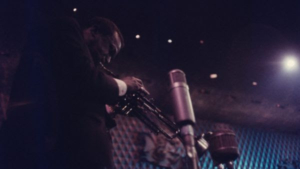
Q: You get approached for all sorts of endorsement and brand partnerships. Have there been requests to sample the Miles Davis catalog by rock, hip hop and rap artists?
A: We were approached by a hip hop group who wanted to use something from Sketches of Spain. And they opened up with ‘bitches and whores,’ so we shot it down. But the estate is very open to positive messages with music and we’ll listen to anyone who wants to come at us to sample any of Uncle Miles’ music. We don’t want anything derogatory or any talking down of women or race. All positive messages.
Q: Do you have any theory why the music of Miles Davis endears and endures many decades after initially being created?
A: I think that when you have a person who has changed the course of music four or five times it’s like, me personally, even if I wasn’t related to Uncle Miles, I’d want to hang on to his every word, you know. I’d follow him like the Pied Piper. And he was the man back then. And still. Anybody I talk to, Charlie Watts, Keith Richards, John Mayer, everybody loves Miles. •
HARVEY KUBERNIK is the author of 16 books. His literary music anthology Inside Cave Hollywood: The Harvey Kubernik Music InnerViews and InterViews Collection Vol. 1, was published in December 2017, by Cave Hollywood. Kubernik’s The Doors Summer’s Gone was published by Otherworld Cottage Industries in February 2018. It was nominated for the 2019 Association for Recorded Sound Collections Awards for Excellence in Historical Recorded Sound Research.
In November 2018, Sterling/Barnes and Noble published Harvey and Kenneth Kubernik’s The Story of The Band From Big Pink to the Last Waltz. The duo for 2021 publication have written a multiple voice narrative book on Jimi Hendrix for Sterling/Barnes and Noble.
Kubernik’s 1995 interview, Berry Gordy: A Conversation With Mr. Motown appears in The Pop, Rock & Soul Reader edited by David Brackett published in 2019 by Oxford University Press. Brackett is a Professor of Musicology in the Schulich School of Music at McGill University in Canada. Harvey joined a lineup which includes LeRoi Jones, Johnny Otis, Ellen Willis, Nat Hentoff, Jerry Wexler, Jim Delehant, Ralph J. Gleason, Greil Marcus, and Cameron Crowe.
For fall 2020 publication Harvey Kubernik will have a new collection of interviews, essays and tributes for a book examining rock documentaries and their soundtracks.
This century Kubernik wrote the liner note booklets to the CD re-releases of Carole King’s Tapestry, Allen Ginsberg’s Kaddish, Elvis Presley The ’68 Comeback Special and The Ramones’ End of the Century.
In 2020 Harvey Kubernik served as Consultant on a new 2-part documentary Laurel Canyon: A Place In Time. Alison Ellwood is the director who helmed the History of the Eagles. Premium television network EPIX will broadcast it on Sunday, May 31st at 10 p.m., and conclude the following Sunday, June 7th at 10 p.m.).

